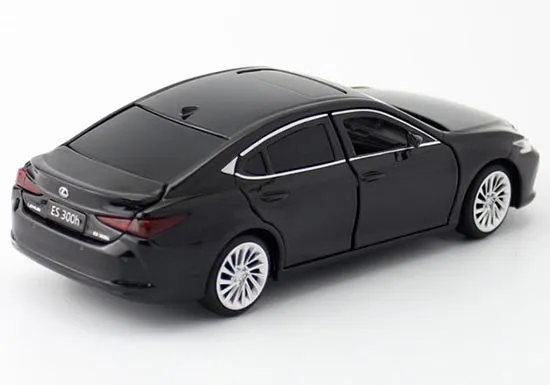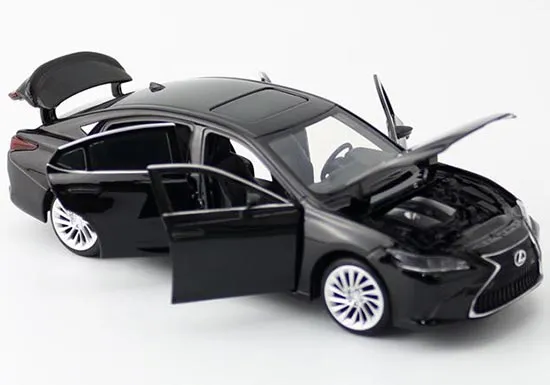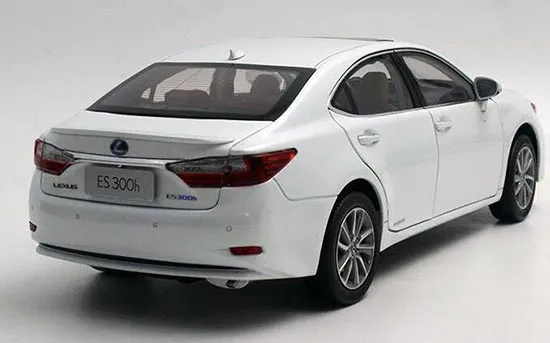The Allure of Diecast Lexus ES300s
Diecast Lexus ES300 models represent more than just miniature cars they are a gateway to the world of automotive passion and collecting. These meticulously crafted replicas capture the elegance and sophistication of the iconic Lexus ES300, offering enthusiasts a tangible piece of automotive history. The appeal lies in the attention to detail the craftsmanship that brings these models to life. For many, collecting diecast Lexus ES300s is a nostalgic journey back to the era of luxury and performance. The shimmering paint the realistic interiors and the perfectly replicated body lines are a testament to the skill of the manufacturers. Whether you’re a seasoned collector or a newcomer to the hobby, the allure of these miniature marvels is undeniable.
Tip 1 Researching the Diecast Market
Before you start buying, research is key. The diecast market can be vast and varied, so understanding its nuances is crucial. Familiarize yourself with different scales. The most popular scales are 1:18, 1:24, and 1:43. Each scale offers a different level of detail and size, affecting both display options and pricing. Websites, forums, and social media groups dedicated to diecast collecting are excellent sources of information. They provide reviews, buying guides, and insights into the market trends. Consider what era of Lexus ES300 you want to collect. The first generation ES300 has a different appeal than later models. Understanding these aspects of the market will allow you to make informed decisions and avoid costly mistakes. Start with a budget and stick to it to make sure you make the most of your collecting budget.
Finding the Right Scale for Your Collection

Choosing the right scale is a foundational step in starting your diecast collection. The scale determines the size and detail of your models and impacts the overall presentation of your collection. 1:18 scale models are typically larger, offering a higher level of detail and allowing for intricate features. They are impressive centerpieces, but they require more display space and can be more expensive. 1:24 scale models are a popular compromise, offering a balance between size and detail. They are also relatively affordable. 1:43 scale models are smaller and more compact, suitable for collectors with limited space. They can be more cost-effective if you’re on a budget. Consider your available space and desired level of detail when making your decision. A mix of scales can create a dynamic and visually interesting display. (Image: lexus-es300-diecast-scale-comparison.webp)
Evaluating Model Accuracy and Detailing
The accuracy and detailing of a diecast model is what truly sets it apart. Assess the proportions of the model, comparing it to photographs of the real Lexus ES300. Does the model capture the essence of the car? Pay close attention to the smaller details like the headlights, taillights, and the wheels. High-quality models will feature realistic headlights, accurate badging, and finely detailed interiors. The paintwork should be smooth and free of imperfections. Look for features like opening doors, hoods, and trunks, as well as steerable wheels, to add to the realism. Online reviews and photos of the models are helpful resources for evaluating accuracy and detailing before committing to a purchase. (Image: lexus-es300-diecast-detailing.webp)
Tip 2 Assessing Model Quality and Craftsmanship
The quality and craftsmanship of a diecast model directly impact its longevity and aesthetic appeal. Assess the materials used in the model’s construction, as well as the overall build quality, ensuring the model is well-assembled and sturdy. Look for models made with high-quality diecast metal and durable plastic components, as these materials can withstand the test of time. Examine the joints and seams for any imperfections. High-quality models will have tight, well-aligned parts. The paint finish should be even and consistent, without any visible blemishes or imperfections. Ensure that moving parts, such as doors and wheels, operate smoothly. A well-crafted model is a testament to the manufacturer’s attention to detail and will provide you with years of enjoyment. (Image: lexus-es300-diecast-paint-quality.webp)
Material and Build Quality Assessment

The materials used and the overall build quality greatly influence a diecast model’s durability and visual appeal. Check the primary material used in the model’s body. Most diecast models are made from diecast zinc alloy, which provides weight and a realistic feel. The plastic components should be durable and securely attached. The windows should be made of clear plastic without any scratches or imperfections. Examine the model’s construction for any gaps or misalignments. Well-built models will have tight joints and a seamless appearance. Test the moving parts, such as doors and wheels, to ensure they operate smoothly and without any resistance. Consider the model’s weight. A well-made diecast model should feel substantial in your hand. By carefully assessing these aspects, you can determine the model’s quality and its ability to stand the test of time.
Inspecting Paintwork and Finish
The paintwork is a critical element in a diecast model’s overall aesthetic. The finish significantly impacts the model’s realism. Examine the paint for any inconsistencies such as drips, bubbles, or uneven coverage. High-quality models will have a smooth, glossy finish that accurately replicates the paint of the real Lexus ES300. Look for fine details like the accurate application of the car’s colors. Check the paint for any scratches or imperfections, as these can detract from the model’s appearance. Some models have metallic or pearlescent finishes, which add a touch of realism. The paintwork should be consistent across the entire model, with no noticeable variations in color or texture. A meticulously painted model showcases the manufacturer’s commitment to quality and attention to detail. (Image: lexus-es300-diecast-paint-quality.webp)
Tip 3 Identifying Reputable Sellers and Sources
Finding reliable sellers is essential for a positive diecast collecting experience. Reputable sellers offer authentic models and excellent customer service. Start by exploring online marketplaces like eBay, Amazon, and specialist diecast stores. These platforms provide a wide selection and competitive pricing. Do your research. Investigate the seller’s feedback and ratings, reading reviews to assess their reliability and customer satisfaction. Be cautious of sellers with suspiciously low prices, as this might indicate counterfeit models or damaged goods. Visit diecast model shows and events to meet sellers in person. These events are great for discovering rare models and building connections with fellow collectors. (Image: lexus-es300-diecast-marketplace.webp)
Online Marketplaces vs. Specialty Stores

Online marketplaces and specialty stores each have their own advantages. Online marketplaces like eBay offer a vast selection, competitive prices, and the opportunity to find rare or out-of-production models. However, the quality of the models can vary, and the risk of encountering counterfeit or damaged items is greater. Specialty stores, whether online or brick-and-mortar, focus exclusively on diecast models and other collectibles. They often have a curated selection of high-quality models from various brands. Specialty stores usually have knowledgeable staff who can provide expert advice and assistance, and they often offer better customer service. Consider your budget and preferences when deciding which type of seller to choose. If you’re comfortable assessing the model’s condition, online marketplaces can be a good option. If you’re looking for expert advice and a guaranteed quality, specialty stores are the better choice.
Checking Seller Ratings and Reviews
Before making a purchase, take the time to check the seller’s ratings and read reviews. This will help you assess the seller’s reliability and customer service. On online marketplaces, check the seller’s feedback score and read the comments from previous buyers. Look for positive reviews that mention the seller’s accuracy of descriptions, fast shipping, and good communication. Be cautious of sellers with low feedback scores or a significant number of negative reviews. If possible, read reviews from other collectors, as they often provide more insights into the seller’s expertise. Check the seller’s return policy to ensure it is fair and reasonable. If you have any doubts about a seller, it is best to look for another source. Due diligence is key to a positive diecast collecting experience.
Tip 4 Understanding Pricing and Valuation
Knowing how to evaluate the pricing of diecast models is essential for making informed purchases and building a valuable collection. Several factors influence the price of these models, including rarity, condition, scale, manufacturer, and demand. Research the current market value of the specific Lexus ES300 model you are interested in. Use online resources, auction results, and price guides to get an idea of the average price. Be aware that prices can vary depending on the seller, the model’s condition, and its rarity. Consider the shipping costs and any potential import duties when calculating the total cost of the purchase. (Image: lexus-es300-diecast-pricing.webp)
Factors Influencing Diecast Model Prices

Several factors influence the pricing of diecast models. Rarity is a significant factor, meaning the fewer models that were produced, the higher the price. The condition is crucial. Models in excellent condition with their original packaging will command a higher price. The scale affects the price, with larger scales generally costing more due to the increased detail and size. The manufacturer also plays a role, with reputable brands like Autoart, Minichamps, and Kyosho often commanding higher prices. The demand for a particular model can also influence its value. Limited edition models or those depicting popular car versions will generally be more expensive. Keep an eye on market trends and price fluctuations to get a good sense of the market value.
Negotiating Prices and Finding Deals
Negotiating prices and finding deals can make your diecast collecting more affordable. On online marketplaces, consider making an offer on a model if the seller is open to negotiation. Be polite and respectful and state your reasoning for the lower offer. Watch for sales, promotions, and discounts. Many retailers offer sales or discounts on specific models or during certain times of the year. Consider purchasing models in lots, as sellers may offer a discount on multiple items. Attend diecast shows and events. These events often offer a good opportunity to find deals and negotiate prices with sellers directly. Be patient and willing to walk away if you cannot reach an agreement. Building a valuable collection doesn’t have to be excessively expensive. (Image: lexus-es300-diecast-pricing.webp)
Tip 5 Proper Care and Preservation of Your Collection
Taking care of your diecast models will help preserve their value and keep them looking their best. Proper storage and display are essential. Avoid direct sunlight and extreme temperatures. These can damage the paint and other materials. Keep your models away from dust and humidity. Dust can scratch the surfaces, and humidity can lead to rust or other damage. If possible, display your models in a glass case. This will protect them from dust, dirt, and accidental damage. Clean your models regularly, using a soft cloth and a mild cleaning solution. Avoid harsh chemicals, as they can damage the paint. With proper care, your diecast models will provide you with years of enjoyment.
Displaying and Storing Your Models

Proper display and storage are essential for protecting your diecast models. The goal is to showcase the collection while keeping the models safe. Display your models in a place where they are not exposed to direct sunlight. Direct sunlight can fade the paint and damage the interior materials. Avoid storing your models in attics or basements. These areas are prone to extreme temperature fluctuations and high humidity. Consider using display cases to protect your models from dust, dirt, and accidental damage. If you do not have display cases, store your models in their original boxes. This can help protect them and increase their value. Arrange your collection in an organized and visually appealing manner. Consider grouping models by brand, scale, or model type. (Image: lexus-es300-diecast-display.webp)
Cleaning and Maintenance Techniques
Regular cleaning and maintenance will keep your diecast models looking their best. Start by gently dusting the models with a soft, clean cloth. This will remove any loose dust or dirt. For more thorough cleaning, use a mild soap and water solution. Dip the soft cloth in the solution and gently wipe the model’s surface. Be careful not to use excessive water, as it can damage the model. Avoid using harsh chemicals, such as solvents, as they can damage the paint. For hard-to-reach areas, use a cotton swab dipped in a cleaning solution. After cleaning, dry the model with a clean, dry cloth. Consider applying a wax or polish specifically designed for diecast models to protect the paint and enhance its shine. (Image: lexus-es300-diecast-cleaning.webp)
Conclusion
Collecting diecast Lexus ES300 models is a rewarding hobby that blends a passion for cars with the joy of collecting. By following these 5 buying tips, you can navigate the market with confidence. Remember to research, assess model quality, identify reputable sellers, understand pricing, and prioritize proper care. Whether you are a seasoned collector or just starting out, these tips will ensure you can build a fantastic collection. The world of diecast Lexus ES300s is a captivating one. Happy collecting!
